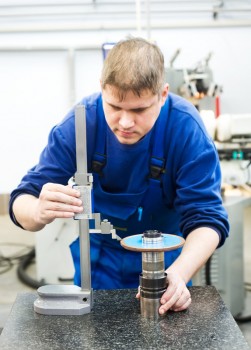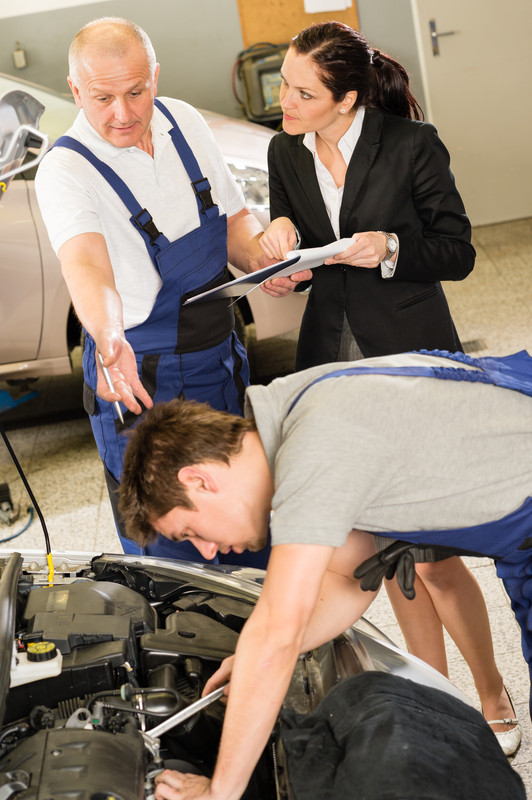Automotive Engineering is a rewarding but challenging career choice. You will be solving many problems during your career and most of the time you will rely on a network of people to get you through your day. Sometimes, a problem will be so bad, that there are only a few people at work that can help you out. Here is a list of four people that you must get to know well as an Automotive Engineer.
1. The CMM/ Measurement Technician
If there is one group that is always overworked, short on time, but absolutely essential to automotive engineering, it would be the measurement technicians. As an engineer we will always need to analyze things and find out why part A won’t play nice with part B. You could use a pair of calipers to measure the two parts – however when you are trying to take a sample of 20 shafts and 20 housings that don’t fit, you might as well just use a random number generator. In comes your CMM/ Measurement specialist to save the day.
 When your project is urgent and you need data on your desk yesterday, you need someone you can go to fast. At a big company (and even worse at a new one) you need to compete with everyone else who has the other 99 parts that won’t fit together that day. (All those projects are marked as urgent as well!). So your best bet is to always be polite and don’t try to game the system with them early on. If your project really is urgent then tell them exactly when you need it. If it can wait, then tell them that as well. If you are honest about your time schedule, they will be more likely to trust that your project is super-hot when you say it is.
When your project is urgent and you need data on your desk yesterday, you need someone you can go to fast. At a big company (and even worse at a new one) you need to compete with everyone else who has the other 99 parts that won’t fit together that day. (All those projects are marked as urgent as well!). So your best bet is to always be polite and don’t try to game the system with them early on. If your project really is urgent then tell them exactly when you need it. If it can wait, then tell them that as well. If you are honest about your time schedule, they will be more likely to trust that your project is super-hot when you say it is.
Another tip is to make sure you always let them know the full problem and listen to their suggestions. Clearly mark drawings and describe what you are looking for. They are engineers too and are usually very eager to help you.They also may have seen something similar issues in the past and could help solve your current problem. I can think of several examples right off the top of my head where the CMM operator suggested why something could be wrong and it ended up being the root cause. Make these guys your friend early and be sure to get to know them on a professional level.
2. Your Counterparts from Other Departments
No matter what type of engineer you are, and which department you are in, – you will be working really closely with many other groups of engineers. Within Automotive Engineering, you will have your own department of similar engineers, but most of your work will be with a product group of engineers from different departments. These product groups focus on a set of parts of a section within the vehicle (depending on whether you are a supplier or OEM). You may work on a certain product line as a manufacturing engineer but you will have to work with the Design Engineer, Supplier Quality Engineer, Purchasing Executive, etc. Whenever you are solving issues you will be working closely with these people.
Each department has a separate responsibility for that part and often the interests will conflict. It is important that you learn to work together to ensure that you don’t get stalled with political troubles. There is a lot of give and take when it comes to fixing a long term issue. The best product teams know that sometimes they will not always get exactly what they want, but work towards solving the larger problem as a whole. I have worked in good teams where everyone was focused on solving the problem and everyone got along great. Everyone came out looking like a hero and really helped the company as a whole. I have also worked with bad teams where it was like pulling teeth to get anything done, and the whole team suffered as a result. Remember, you only need one horrible person to make the whole team go crazy.
It is important to understand that everyone has a different stake in the problem, but only together can it really be solved. Forming a good relationship with your product group or section team mates is essential to succeeding in automotive and enjoying your work more.
3. The Change Management Department
The Change Management Department are the people who approve your changes or deviations. They are the gate-keepers on how you will get things done. Sometimes it is just one Purchasing Executive; sometimes it is an entire department. You need to make sure that you do not aggravate these people too much. Usually there are a lot of rules for engineering changes and these guys don’t have patience for those who break them. Make sure you are trained well on how to enter changes and what each specific step is that you need to take.
If you are productive and do not cause them extra work, they will be more likely to help you in the future when you need to push up a change or get approval from the department head who rarely checks his mail. Like the Measurement Technicians, they hear that things are urgent way too often. It’s important that you understand the change process and don’t waste their time with missing information. Get on their good side and they will help you out when you are struggling to get all your change information together or if you need someone to help correct a big mistake with your change.
4. The Production Supervisors and Associates
As an engineer you will be always trying to see how things SHOULD work out. These men and women will tell you how it IS working out. They are out on the front lines, and are usually dealing with your parts or processes every day. Whether you are in design, quality or manufacturing, if you are looking for feedback on anything, these are your best go-to people. You may have developed something that works together a few times, but the associates and supervisors will tell you if it works for a few thousand times. Not sure if you put enough clearance between a fixture and a part? The Line Associate will be the first to tell you that they have to jam the part in place when the parts come in at the low end of the tolerance.
I cannot begin tell you how important it is to get feedback on new parts, processes, or measurements. Another way that a good relationship with the line workers pays off is that they will be able to tell you the problems that keep getting brushed under the carpet. If there is a problem with something in terms of quality or assembly, they will have seen it a million times. I have had times where I couldn’t figure out why a certain door seal kept coming off. Sure enough, after talking with a few of the Line Associates, they told me that the parts would often come in slightly warped and they would have to bend the parts just to get them on. A design issue that I would have spent hours working on was fixed with a 10 minute conversation (and an angry call to the supplier). The best way to get on their good side is to let them help you solve the problem. Be sure to tell their supervisor how much they helped you. What goes around comes around. They are experts in their area and what they do will help you solve many specific problems.
Did I miss anyone in this list? Let me know in the comments.


Comments 1
More comente yet need tu get and touch with the company car or trucks